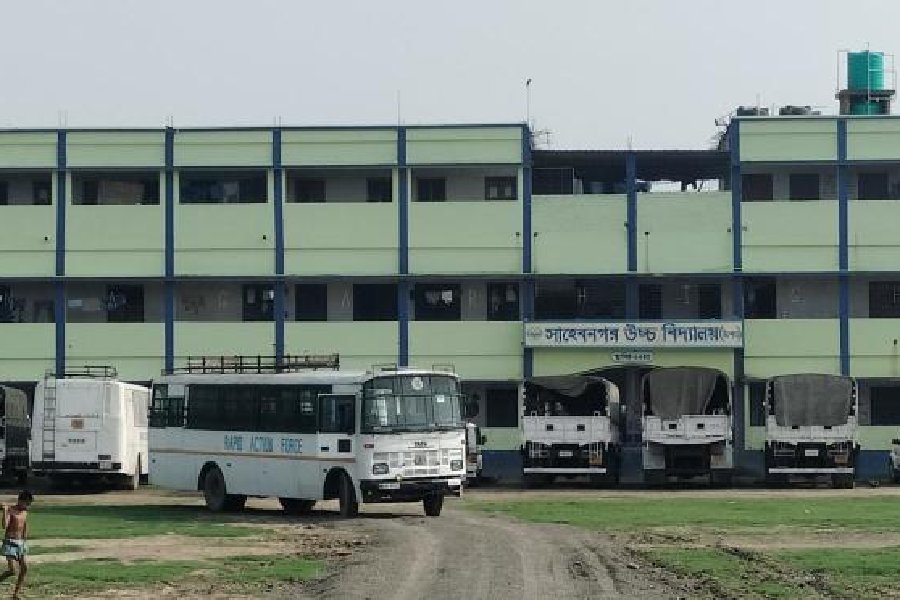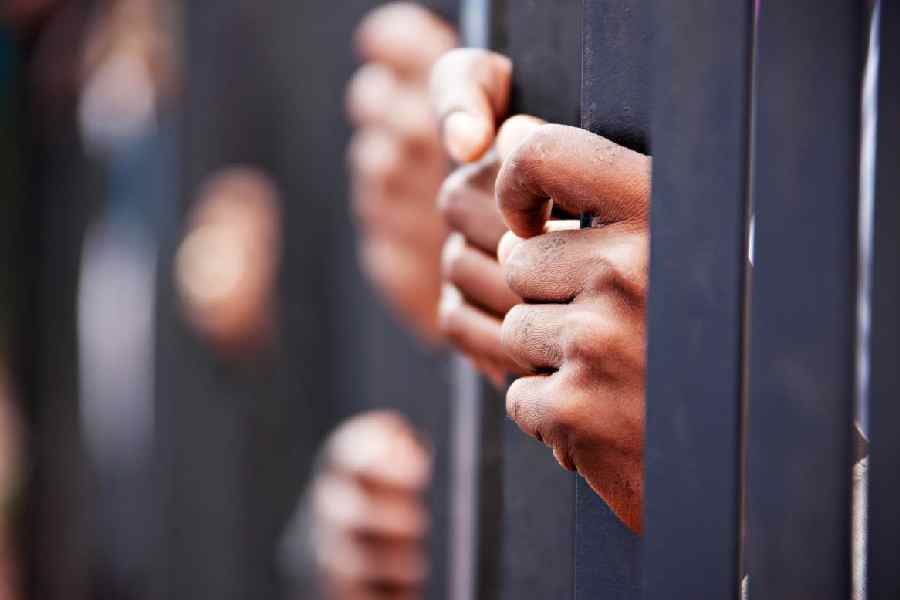 |
| Master craftsman Nimai Chandrapal gives the finishing touches at the British Museum on Saturday |
London, Sept. 16: The formal painting of Durga’s eye — or “Chaksudan” as the British Museum’s assistant keeper Richard Blurton prefers to call it — was executed today by master craftsman Nimai Chandrapal before an appreciative crowd in the hallowed institution’s huge forecourt.
A group of five drummers from Bengal made a terrific racket, devotees blew conch shells, Bengali women of a certain age wore cream saris with red borders and tourists from all over the world gathered round for what was for most of them a bit of an eye-opener.
The building of the pratima by Chandrapal and his two colleagues, Bishwajit Chak-ravarti and Madhusudan Pal, has been making steady progress and should be completed this week.
Television cameramen climbed up steel steps to film Chandrapal at work. Before they could do so, journalists had to sign British Museum forms indemnifying the institution from being legally responsible were they to fall. Two nations united by a common love of bureaucracy were having a great time.
Once the pratima is built, all the various gods and goddesses will be dismantled, taken in a procession to the puja venue in Camden, north London, before eventual bisarjan in the Thames.
No one was entirely certain of the genesis of the eye-painting ceremony but today marked an important stage in Durga’s construction. Chandrapal said something about “Mother opening her eyes” for the first time, while another spoke of life slowly entering the statues.
Outside, on a muggy, cloudy day, visitors sat under a giant poster of Voices of Bengal and munched their sandwiches.
One of the three elements of Voices of Bengal, being held in Room 91 on the fourth floor, is worth tracking down. Myths of Bengal, which “explores the narrative traditions of Bengal as imagined by its artists”, includes displays on Durga, Kali, Krishna, Manasa, Rama as well as two Muslim saints, Gazi and Manik.
Another element of the exhibition is a collection of the museum’s Tagore paintings, which is now also open to the public.
At the entrance is a bust of Tagore done by Sir Jacob Epstein in 1926. On the wall is a quotation from Tagore from the Hibert Lecture he delivered in Oxford in 1930: “Our family has a confluence of three cultures, Hindu, Mohammedan and British.”
On the wall there is currently playing footage from a Tagore documentary done by Satyajit Ray in 1961.
What is more of a revelation is that the British war poet Wilfred Owen had been a Tagore fan.
He had scribbled down some Tagore lines which were found in his pocket after he was killed in action in 1918, aged only 25. Owen’s mother wrote to Tagore afterwards to say that those lines were the last words uttered by her son when he had said goodbye to her as he left for the front — “when I go from hence let this be my parting word, that what I have seen is insurpassable”.
The new generation of British Bengalis and Bangladeshis are not over-burdened by knowledge of their own culture — and this the British Museum hopes to address in the nicest possible way. But perhaps one should not be too hard on youth.
The only Owen modern Britishers have heard of does his own poetic thing for Newcastle United.










